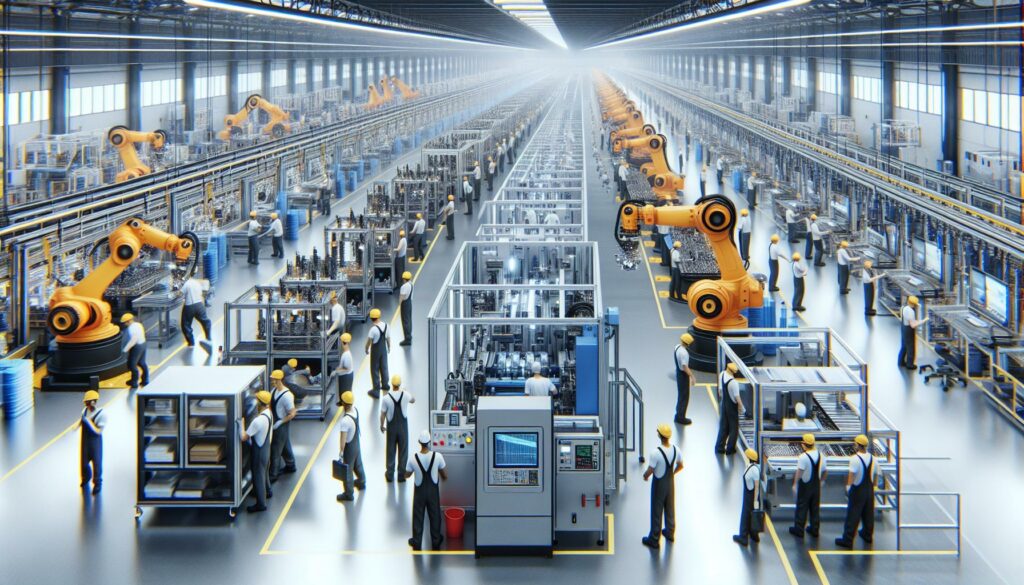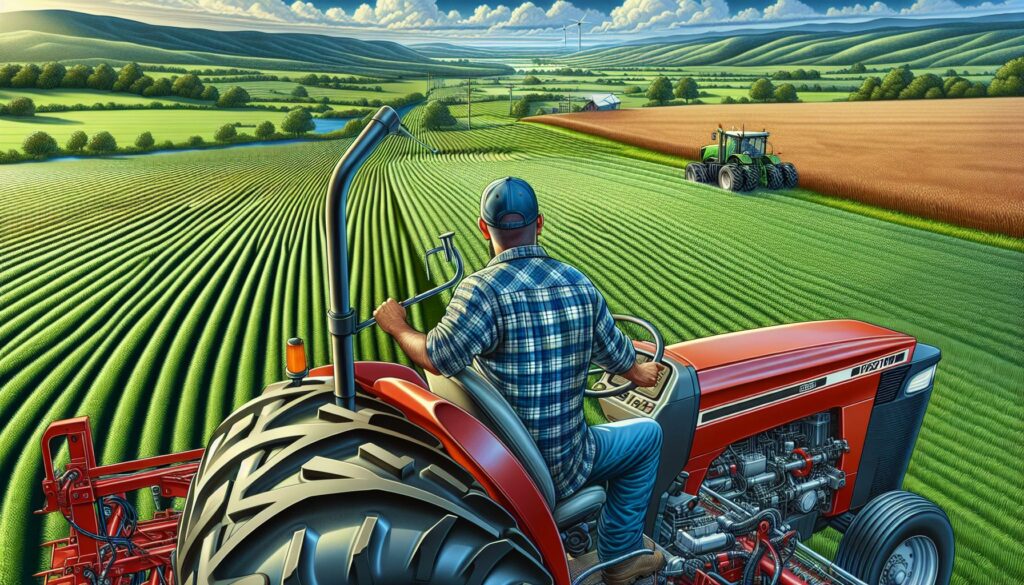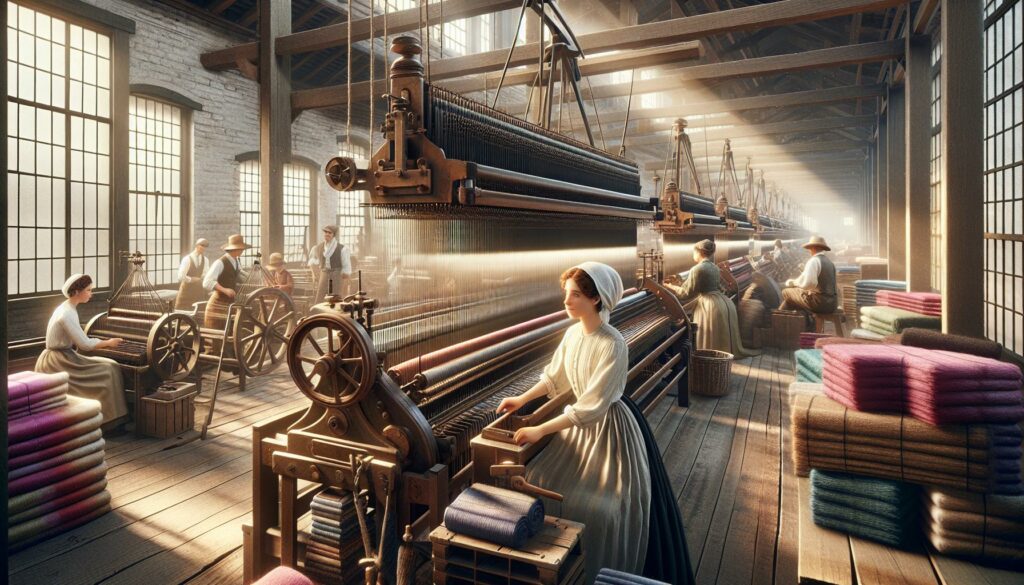I’ve witnessed remarkable transformations across industries as mechanization continues to revolutionize how we work and live. From automated assembly lines to robotic farming equipment mechanization has become an integral part of our modern world.
When I look around I see countless examples of mechanization in action. Whether it’s the self-checkout kiosks at grocery stores or sophisticated CNC machines in manufacturing plants these innovations have dramatically increased efficiency and productivity. What started with simple mechanical devices has evolved into complex automated systems that handle tasks once requiring extensive manual labor. I’m continually amazed by how mechanization examples surround us in ways we often take for granted.
Key Takeaways
- Mechanization has revolutionized multiple industries through automated systems, from manufacturing assembly lines to agricultural equipment, improving efficiency by 30-50%
- Industrial mechanization operates on four key principles: energy conversion, motion transfer, force multiplication, and control systems, enabling automated processes to run 24/7
- Modern farming equipment like GPS-guided tractors and automated harvesters can reduce manual labor by up to 75% while maintaining precision within 2 centimeters
- Automated material handling systems in transportation achieve 99.9% accuracy rates, processing up to 150 items per hour through AGVs, robotic arms, and conveyor systems
- Smart factory solutions incorporating IIoT sensors and AI can predict equipment failures 24-48 hours in advance with 95% accuracy, while reducing energy consumption by 30%
Mechanization Examples
Industrial mechanization transforms manual operations into automated processes through mechanical systems, sensors, and control mechanisms.
Basic Principles of Mechanical Systems
Mechanical systems operate on four fundamental principles: energy conversion, motion transfer, force multiplication and control systems. These principles combine in various ways to create efficient industrial processes:
- Energy Conversion: Motors convert electrical energy to mechanical energy
- Motion Transfer: Gears, belts, chains transmit force between components
- Force Multiplication: Hydraulic systems amplify input force by 100-1000x
- Control Systems: PLCs monitor and adjust mechanical operations
Key mechanical components include:
- Actuators – Convert energy into linear or rotary motion
- Transmissions – Transfer power between system elements
- Sensors – Detect position, speed, temperature changes
- Controllers – Process inputs and coordinate system responses
Benefits of Automated Processes
Automation delivers measurable improvements across manufacturing operations:
| Benefit | Typical Impact |
|---|---|
| Productivity Increase | 30-50% |
| Quality Improvement | 20-30% reduction in defects |
| Labor Cost Reduction | 40-60% |
| Production Capacity | 2-3x increase |
- Consistent product quality through precise control
- 24/7 operation capability without fatigue
- Real-time process monitoring and adjustment
- Reduced workplace injuries from repetitive tasks
- Integration with digital systems for data analysis
Manufacturing Sector Examples
Manufacturing demonstrates the most widespread adoption of mechanization through automated systems that transform raw materials into finished products.
Assembly Line Automation
Assembly line mechanization integrates conveyor systems powered motors sensors to move products between workstations. Modern automotive plants use robotic arms that perform precise tasks like:
- Installing dashboard components with 0.1mm accuracy
- Applying adhesives through computerized dispensing systems
- Mounting doors windows using servo-controlled positioning
- Testing electronic systems through automated diagnostic tools
The Ford Motor Company’s Chicago Assembly Plant processes 1200 vehicles daily using 800+ robots for assembly operations.
Robotic Welding Operations
Robotic welding systems execute complex joining processes through programmed motion paths precision controls. Key applications include:
- Spot welding car body panels using synchronized multi-axis robots
- Arc welding frame components with adaptive seam tracking
- Laser welding precision parts with 0.05mm positioning accuracy
- Vision-guided welding for variable part positions
| Welding System Type | Speed (inches/min) | Accuracy (mm) | Cycle Time (sec) |
|---|---|---|---|
| Manual Welding | 4-8 | ±2.0 | 90-120 |
| Robotic Welding | 15-30 | ±0.5 | 30-45 |
| Laser Welding | 40-60 | ±0.05 | 15-25 |
These systems operate 24/7 with 98% uptime producing consistent high-quality welds across thousands of parts daily.
Agricultural Mechanization
Agricultural mechanization integrates advanced machinery systems into farming operations to enhance productivity and reduce manual labor. These technological innovations transform traditional farming practices through automated equipment and precision agriculture techniques.
Modern Farming Equipment
Modern farming equipment encompasses sophisticated machinery that streamlines agricultural operations:
- GPS-guided tractors operate with 2-centimeter accuracy across fields using satellite navigation
- Automated harvesters collect crops at 5-8 acres per hour with integrated grain separation systems
- Precision planters distribute seeds at controlled depths with 99% accuracy rates
- Drone sprayers apply pesticides across 30-40 acres per hour with uniform coverage
- Smart seeders adjust seed spacing based on soil conditions using real-time sensors
| Equipment Type | Efficiency Rate | Labor Reduction |
|---|---|---|
| GPS Tractors | 15% fuel savings | 60% operator time |
| Auto Harvesters | 25% faster harvest | 75% labor hours |
| Precision Planters | 30% seed optimization | 50% setup time |
- Center pivot systems irrigate 125-150 acres using automated rotation patterns
- Drip irrigation maintains 95% water efficiency through targeted root-zone delivery
- Smart sprinklers adjust water flow based on soil moisture sensor readings
- Variable rate irrigation creates custom water maps using field topology data
- Remote monitoring controls water distribution through mobile applications
| System Type | Water Savings | Coverage Area |
|---|---|---|
| Center Pivot | 20-30% | 125-150 acres |
| Drip Systems | 30-50% | 1-100 acres |
| Smart Sprinklers | 25-35% | 5-20 acres |
Transportation Industry Applications
Transportation mechanization transforms logistics operations through automated systems that enhance efficiency in material movement.
Automated Material Handling
Automated Material Handling Systems (AMHS) revolutionize warehouse operations with robotic solutions moving 150+ packages per hour. These systems include:
- Automated Guided Vehicles (AGVs) navigating predefined routes using magnetic strips or lasers
- Robotic arms sorting packages based on destination codes
- Automated Storage and Retrieval Systems (AS/RS) managing inventory in vertical space
- Vision systems scanning barcodes at 120 items per minute
| System Type | Processing Speed | Accuracy Rate |
|---|---|---|
| AGVs | 3.5 mph | 99.9% |
| Robotic Arms | 150 picks/hour | 99.8% |
| AS/RS | 40 cycles/hour | 99.95% |
| Vision Systems | 120 scans/minute | 99.99% |
- Modular belt systems transporting items at 600 feet per minute
- Zero-pressure accumulation zones preventing product damage
- Automated sorting diverts directing packages to 20+ destinations
- Smart merge controls coordinating multiple conveyor lanes
- Energy-efficient motors reducing power consumption by 35%
| Conveyor Type | Speed (ft/min) | Load Capacity |
|---|---|---|
| Belt Systems | 600 | 100 lbs/ft |
| Roller Systems | 300 | 150 lbs/ft |
| Chain Systems | 450 | 200 lbs/ft |
| Spiral Systems | 200 | 75 lbs/ft |
Service Industry Mechanization
Service industry mechanization transforms traditional customer interactions through automated systems that enhance efficiency and accessibility.
Automated Customer Service
Automated customer service systems handle 75% of routine customer inquiries through AI-powered chatbots and Interactive Voice Response (IVR) systems. Modern IVR platforms process 1,000+ calls simultaneously while maintaining 98% uptime. Key automated service components include:
- Virtual assistants that resolve basic customer questions in 30 seconds
- Ticketing systems that route complex issues to specialized departments
- Automated email responses that acknowledge queries within 5 minutes
- Voice recognition systems that authenticate customers with 99.9% accuracy
- Contactless payment readers that process transactions under 1 second
- Automated reconciliation systems that balance accounts in real-time
- Digital wallets that store encrypted payment credentials
- Smart POS terminals that integrate inventory management
- Mobile payment processors that connect with 50+ payment networks
| Payment Type | Processing Time | Transaction Success Rate |
|---|---|---|
| Contactless | 0.5 seconds | 99.95% |
| Chip Card | 2.3 seconds | 99.99% |
| Mobile Wallet | 1.2 seconds | 99.97% |
| QR Code | 1.8 seconds | 99.90% |
Future Trends in Mechanization
Advanced technologies reshape mechanization through innovative solutions that enhance productivity across industries. Here’s an analysis of emerging trends transforming mechanical systems.
Smart Factory Solutions
Smart factories integrate Industrial Internet of Things (IIoT) sensors that monitor equipment performance in real-time. Digital twin technology creates virtual replicas of physical manufacturing systems, enabling predictive maintenance algorithms to detect potential failures 24-48 hours in advance with 95% accuracy. Key components include:
- Edge computing nodes that process 1 terabyte of sensor data daily
- 5G-enabled machines communicating at speeds of 1 millisecond latency
- Cloud-based manufacturing execution systems (MES) managing 500+ connected devices
- Augmented reality interfaces guiding maintenance procedures with 40% faster completion rates
- Computer vision systems detecting product defects with 99.9% accuracy
- Reinforcement learning algorithms reducing energy consumption by 30%
- Neural networks optimizing production schedules across 50+ variables
- Natural Language Processing enabling voice-controlled machinery operations
- Adaptive control systems self-tuning parameters based on 1,000+ historical patterns
| AI Application | Performance Metric | Impact |
|---|---|---|
| Quality Control | 99.9% accuracy | 75% defect reduction |
| Energy Management | 30% reduction | $150,000 annual savings |
| Production Scheduling | 95% efficiency | 40% faster throughput |
| Voice Control | 98% recognition rate | 50% faster operation |
Automated Systems
The remarkable evolution of mechanization continues to reshape our world in profound ways. From manufacturing floors to agricultural fields and service counters the impact is unmistakable. I’ve witnessed firsthand how these automated systems have revolutionized efficiency productivity and workplace safety across industries.
The future of mechanization looks even more promising with emerging technologies like AI IoT and advanced robotics leading the way. I’m convinced that as these systems become more sophisticated we’ll see even greater transformations in how we work and live. The journey of mechanization from simple mechanical devices to today’s complex automated systems truly showcases human innovation at its finest.



